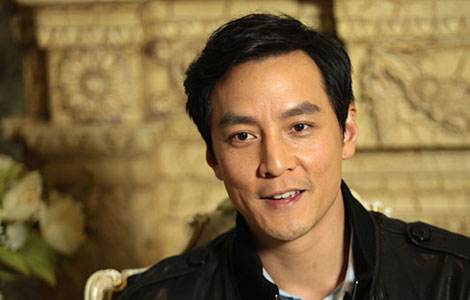Carry on in-depth reforms
Updated: 2013-10-22 08:11
By Luo Feng (China Daily)
|
|||||||||||
Country needs innovation, systematic arrangements to suit national conditions and delegation of power to localities
During an inspection tour of Hubei province in July, President Xi Jinping stressed that China should conduct in-depth studies on major problems in its efforts to advance comprehensive reforms.
Xi's remarks, which are in essence a reflection of the reform strategy of China's new leadership, mean the country has sounded the clarion call for new round of reforms.
To further release the dividends produced by reforms, China should not only clear away obstacles and obstructions and fully mobilize available resources, but also work out proper ways and methods to handle relations between top-end institutional design and "crossing the river by feeling the stones", a phrase to describe China's exploring its own development path.
China has scored remarkable achievements in various fields after 30-plus years of reform and opening-up, but a series of difficulties and problems have also emerged, all of which badly need to be resolved through further reforms.
Top-end institutional design, which will focus on systematic and institutional arrangements and pay more attention to issues of overall and strategic importance, has thus become an important method for China to push forward a new round of reforms.
Deng Xiaoping, the late architect of China's reform and opening-up initiative, stressed two decades ago that "reform will touch the interests of many people and thus will encounter numerous obstacles". The reason why we say that China's reforms have entered the deep-water area is mainly that these reforms have encountered huge obstructions, especially from interest groups.
Compared with the initial period of the reform and opening-up policy, during which almost all groups could benefit, deepened reforms in a new era will inevitably touch the vested interests of some groups. How can the country break some old ideological fetters and firmly entrenched interests? Exploring new resources and factors for advancing reforms through the top-end systematic design will play an important role.
A scientific and well-conceived top-end systematic arrangement, in which various interest relationships will become more reasonable and the current unreasonable interest patterns will be smashed, will inevitably ignite more motivation for reforms.
More than 30 years of rapid development since the reform and opening-up initiative was embraced, it is time for China's fast-driving economic engine to moderately decelerate and some scientific development concepts to be adopted for improvements. It is time that the country carried out systematic self-reflection on its established top-end institutional design, especially those measures taken for trial reforms.
The three decade-long trial reforms have helped China extract some precious experiences, and more important, enabled it to detect some institutional obstacles that hinder the further deepening of the reform and opening-up initiative. All these tell that China needs to have a new top-end institutional arrangement to absorb all its valuable experience and lessons it has learned from the previous reform process.
Due to different priorities in different fields, China's reforms over the past decades have shown an obvious characteristic of fragmentation. Compared with full-fledged reforms in the economic area, social reforms have made much slower progress. The country has yet to build a public governance framework with benign interactions between the government, the market and the society. Besides, the country's reforms in certain areas prove to be mainly a response to some emergency problems that lack systematic and long-term strategic considerations, as indicated by ones in the educational, healthcare and other sectors related with people's livelihood.
Without an overall and far-sighted top-end institutional arrangement, any reforms in a single field will be difficult to be advanced. In the absence of an effective oversight mechanism from such a top-end institutional design, some local governments will also likely pursue selfish interests or compromise the interests of ordinary people in the name of reforms.
The stress on the importance of the top-end institutional design does not mean underestimating the value of "crossing the river by feeling the stones". Despite its paramount importance, the top-end systematic design still needs some changes and corrections in the process of its implementation for self-improvements. That means any well-conceived top-end institutional design should leave certain space to local governments for innovation.
China is a large country with huge differences among different regions and industries. This decides that any systematic arrangement from the central government should allow varying implementation mechanisms among different regions. At the same time, any scientific top-end institutional design, which can only set up a basic institutional framework, cannot formulate specific measures for implementation.
To raise its political efficiency, any big country like China should not only strengthen its top-end design and work out systematic arrangements suitable for its concrete national conditions, but also delegate some power to local governments and encourage their innovations.
In a diversified society, a top-end institutional arrangement is badly needed to balance the interests among various parties. However, the general nature of any top-end design decides its limitations in resolving specific conflicts of interest among different parties, which demand local governments should be given certain space to play their role in its implementation.
Both the top-end institutional design and "crossing the river by feeling the stones" will be of particular importance to China's new round of reforms. Without biding farewell to the current fragmentized reforms, any overall reforms, even well-conceived, will be difficult to press ahead with. Similarly, without "crossing the river by feeling the stones", any top-end institutional design will be difficult to effectively implement.
The Chinese version of this article first appeared in the Study Times.
Related Stories
Central-local relations at heart of fiscal reform 2013-10-22 07:24
Chinese shares rise as govt stresses reform 2013-10-21 16:07
Financial reform must continue 2013-10-21 07:11
As China's economy grows, so does reform call 2013-10-20 10:14
Big hopes on Third Plenum for reform 2013-10-21 07:06
Today's Top News
UK official looks to China for support
Economy to see 'good ending' in Q4
Teacher killed in US school shooting
Border agreement to boost ties
US OKs Alibaba structure
Beijing works to spur global development
Scientists requested government to plant GM crops
Travelers to Europe bypass attractions of Brussels
Hot Topics
Lunar probe , China growth forecasts, Emission rules get tougher, China seen through 'colored lens', International board,
Editor's Picks

|

|

|

|

|

|





